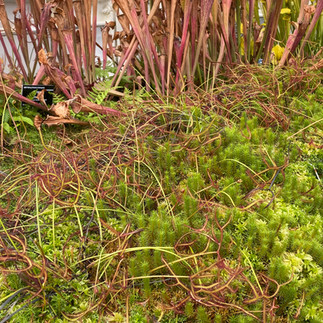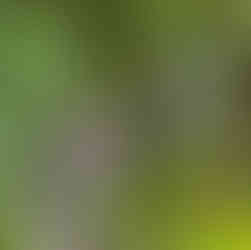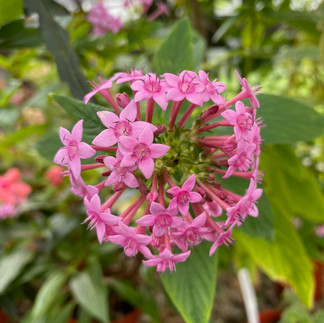Visit to Glasgow Botanical Gardens
- Megan
- Oct 1, 2023
- 4 min read
Last week I visited Scotland for the first time, I stayed in Edinburgh with a friend and intended to see as many different places as possible in my short stay of only 3 days. On the second day of my trip I travelled to Glasgow to explore some of the sights around the city centre. Out of all the things we had planned that day I was especially eager to go to the Glasgow Botanical Gardens after hearing some great reviews.

We travelled up early in the morning, hitting rush hour we were greeted with the morning commuters on the train ride up. Walking towards the botanical gardens it was nice to get a sense of the city life as we straggled along with crowds of individuals taking in the sights. Entering the gates of the botanical gardens it appeared busy as the paths were packed with multiple people, however on entering the first glasshouse we were only greeted with a couple of people. The botanical gardens grants access to many other routes so it is a great place for individuals to take shortcuts to their destination whilst also being able to walk through the gardens.
We firstly explored the Kibble Palace which was most probably my most favourite part of the gardens, especially because it had a large carnivorous plant collection which featured loads of Sarracenia species. As you enter the building the carnivorous collection is first on your left so it is understandable that once I entered and saw the carnivorous plant display that had to be my first stop.

It was very clear that the people who cared for the carnivorous plants in the glasshouse knew what they were doing as plants were planted in correct media, watered well and suitable temperate conditions which suited all the plants they had in their. I loved the middle bench which had a lovely little river down the middle and various Sarracenia species including purpurea, leucophylla and rubra either side.
On the benches around the edges, there was various taller and larger Sarracenia including flava, leucophylla, alata, oreophila as well as more Sarracenia purpurea and even Sarracenia psittacina. It was a great set up which displayed so many different species of Sarracenia and their hybrids, showing off colour, height and shapes on healthy plants. This also allowed the public to also see what stages these plants are at naturally at this time of the year as the Sarracenia oreophila had already gone into dormancy and the Sarracenia leucophylla had just started to put out beautiful autumn pitchers which is expected this time of the year in the UK.
I also liked the addition of other hardy and temperate carnivorous plants scattered amongst the Sarracenia which included Drosera binata, Dionaea muscipula and aquatic Utricularia species. Personally this was a great example of showcasing various carnivorous plants beyond the typical you often see in displays whilst also being educational to the public with various signs and information detailing location data, plant names and facts.
As a bonus, on both sides the plants were cascaded in beautiful healthy green sphagnum moss, this was very prominent in many of their displays not just the carnivorous ones, I have never seen so much sphagnum before, it was a beautiful sight.
Afterwards we ventured out of the carnivorous plant display and saw the rest of the Kibble Palace which had some lovely temperate displays. There was a lot of Tree Ferns in the main display which I was in awe of as I have always loved Tree Ferns but have never seen them planted in a naturalistic display before. Overall I think the temperate glasshouse was brilliant in displaying plants which we are accustom to growing in the UK but in a set up which made you really admire them individually. The information for the plants was scattered throughout the whole gardens which drew you in and was factually correct.
Next we moved onto the other glasshouses that had more topical and unusual displays of plants both planted in benches and potted. There was different sections within the glasshouse which either showed off a certain genus or what conditions were suited to a group of plants. These included Orchids, Bromeliads, Begonias, Cacti, Crassula, Aloes, Succulents and other alpines plus so many more!
Within the tropical section there was various Nepenthes cascading down from vines and branches above you as well as several large and rarer specimens which were displayed behind glass in order to protect them. As well as this it also showcased many different plants which we are more likely to see as houseplants, so was amazing to see such large plants grown looking so naturally.
The Glasgow Botanics also had a great Orchid display with so many unusual looking orchids, many protected behind glass and understandably so due to the incredible colours and shapes of their flowers.
Finally I looked around the alpine and rockery part within the glasshouses, I enjoyed how the plants were displayed within large rocks, some of which were also planted in large porous rocks which looked like pumice to give trailing plants a more natural appeal.
Overall I was very impressed with the Glasgow Botanical Gardens and it was clear that they had their plants in mind with their displays which were well kept and each display had been carefully considered based on location. Almost every plant had a name tag and there was loads of information about various genera of plants scattered around so there was always something to learn as you went around. I definetely recommend going if you ever visit Glasgow!

This was definetely one of the highlights of my trip and of course at the end I had to go back and see the carnivorous plant display one more time!



























































































